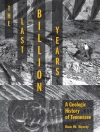A multidisciplinary study of Bera Lake in Malaysia is presented here, focusing on natural resources throughout the lake’s catchment area and assessing environmental impact. This applied limnology study examines issues relating to land development including soil erosion and nutrient loss in the catchment area, severe pollution of water, sediment resources in open waters and wetlands, and reduction of aquatic and bird populations. The chapters provide a comprehensive view of problems, risks and possible mitigation measures associated with this great natural habitat. The book highlights the technology and methods used to estimate both soil erosion rate and nutrient loss from the lake catchment, including an explanation of the measurement of the sedimentation rate in Bera Lake using
137Cs and
210Pb radioisotopes. The author examines the current and historic situation of contamination in sediments, presents an ecological risk assessment, and finally describes a master management plan, proposing practices to mitigate the environmental impacts of existing agricultural projects and practices to control future projects. Readers will learn of a decrease in the watershed supply of water to Bera Lake, of shoaling, degradation of water and sediment quality, and the extinction of several kinds of flora and fauna. This volume also offers an approach to sustainable land use with regard to natural resources conservation.
Inhoudsopgave
Introduction.- Bera Lake.- Sedimentation Rate in Bera Lake.- Soil Erosion Rate and Nutrient Loss at the Bera Lake Catchment.- Sediment Quality and Ecological Risk Assessment of Bera Lake.- Watershed Management Practices.












